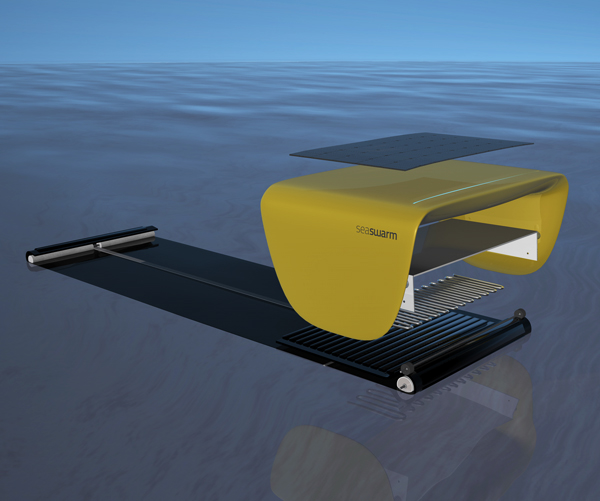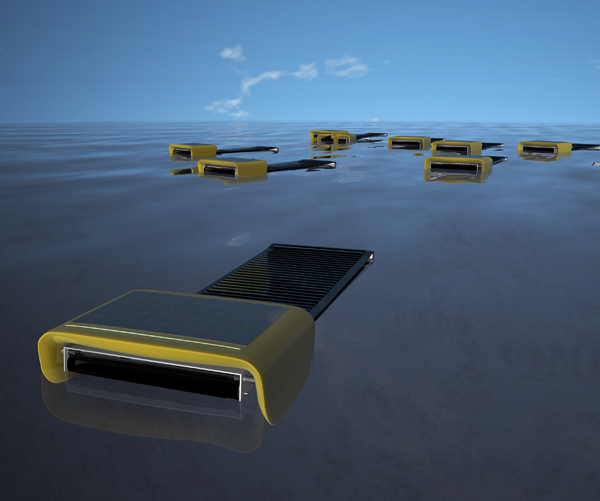By autonomously navigating the water’s surface, Seaswarm proposes a new system for ocean-skimming and oil removal.
Seaswarm uses a photovoltaic powered conveyor belt made of a thin nanowire mesh to propel itself and collect oil. The nanomaterial, patented at MIT, can absorb up to 20 times its weight in oil. The flexible conveyor belt softly rolls over the ocean’s surface, absorbing oil while deflecting water because of its hydrophobic properties. Seaswarm is intended to work as a fleet, or “swarm” of vehicles, which communicate their location through GPS and WiFi in order to create an organized system for collection that can work continuously without human support. Because they are smaller than commercial skimmers attached to large fishing vessels, they are able to navigate hard to reach places like estuaries and coast lines. Seaswarm works by detecting the edge of a spill and moving inward until it has removed the oil from a single site before joining other vehicles that are still cleaning. Oil is "digested" locally so that Seaswarm does not need to make repeated trips back to shore, which would dramatical
Seaswarm
Autonomous robot fleet of oil-absorbing robots
Autonomous robot fleet of oil-absorbing robots
Seaswarm video.

Extruded axonometric 3D model of seaswarm components.

Two seaswarm vehicles.

Fleet of seaswarm vehicles, moving in swarm pattern.







